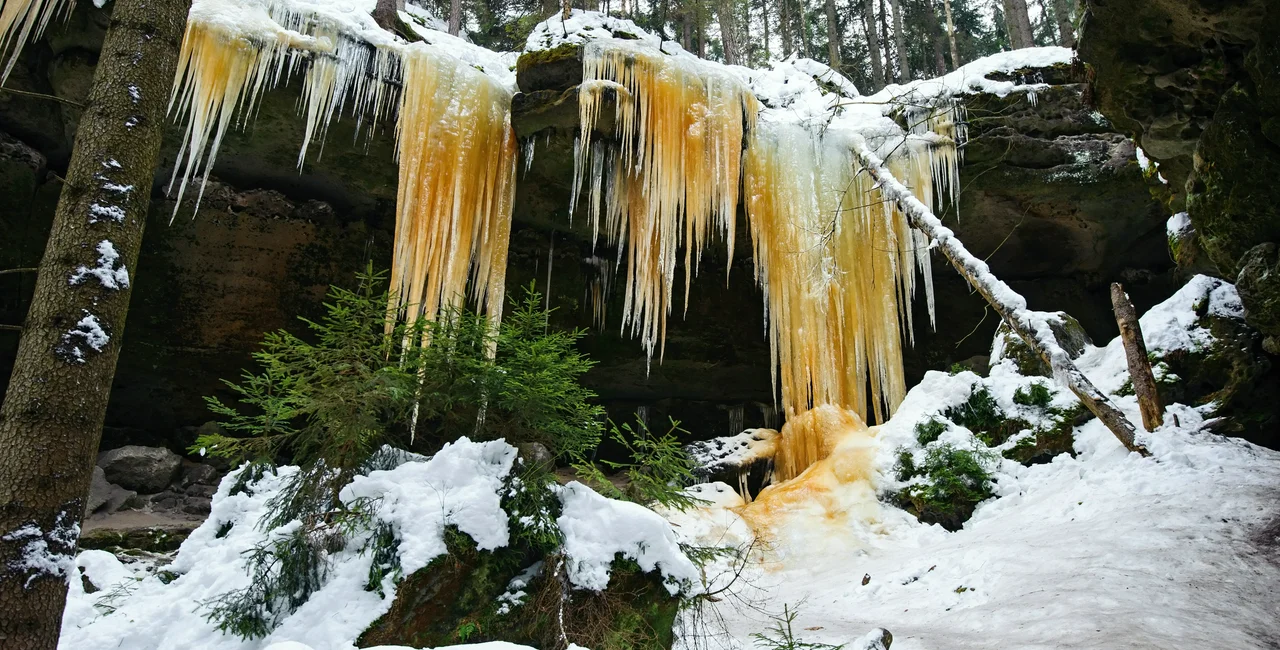One of the more unique Czech winter phenomenona has returned for the 2021 winter season: the colorful ice falls at Pulčínské skaly, in the Javorníky mountain range near the border with Slovakia.
Every year from the end of January through March, icicle formations in the area turn a bright blood-orange. The area has become a favorite for local tourists during the roughly two-month window the ice falls appear, and each year the exact color and formation of the ice falls is different. The ice falls can turn red, orange, yellow, or even green.
From the rock formations at Pulčínské skaly in an area known as Propadlý hrad (Fallen Castle), the colored icicles can reach lengths of up to four meters at their peak.
For years, the exact reason behind the color was misunderstood: geologists originally thought the orange color of the ice falls was due to sediment within the rocks they flow over.
In 2008, however, researchers found that the coloration was due to microscopic snow algae that lives within the ice. The algae was first discovered in the High Tatras in the 1940s.
The ice falls are located within the Beskydy Protected Landscape Area, and hiking through the preserve outside of the marked paths is usually prohibited. To see the falls, however, a special path is opened each year from January 1 through the end of March.
The path starts from the Pulčín neighborhood north of the village of Francova Lhota. If you'd like to travel to see the Pulčínské skaly ice falls for yourself, consult Czech Tourism's Tips for Trips for a precise location.
The Pulčínské skaly ice falls are said to usually reach their peak size during February.
Though they are the best known, the Pulčínské skaly ice falls aren't the only to be reported in the Czech Republic during the late winter months.
Closer to Prague, similar colored icicle formations have also been spotted in the Bohemian Switzerland National Park, and are likely the result of a similar phenomena.












 Reading time: 1 minute
Reading time: 1 minute 


















